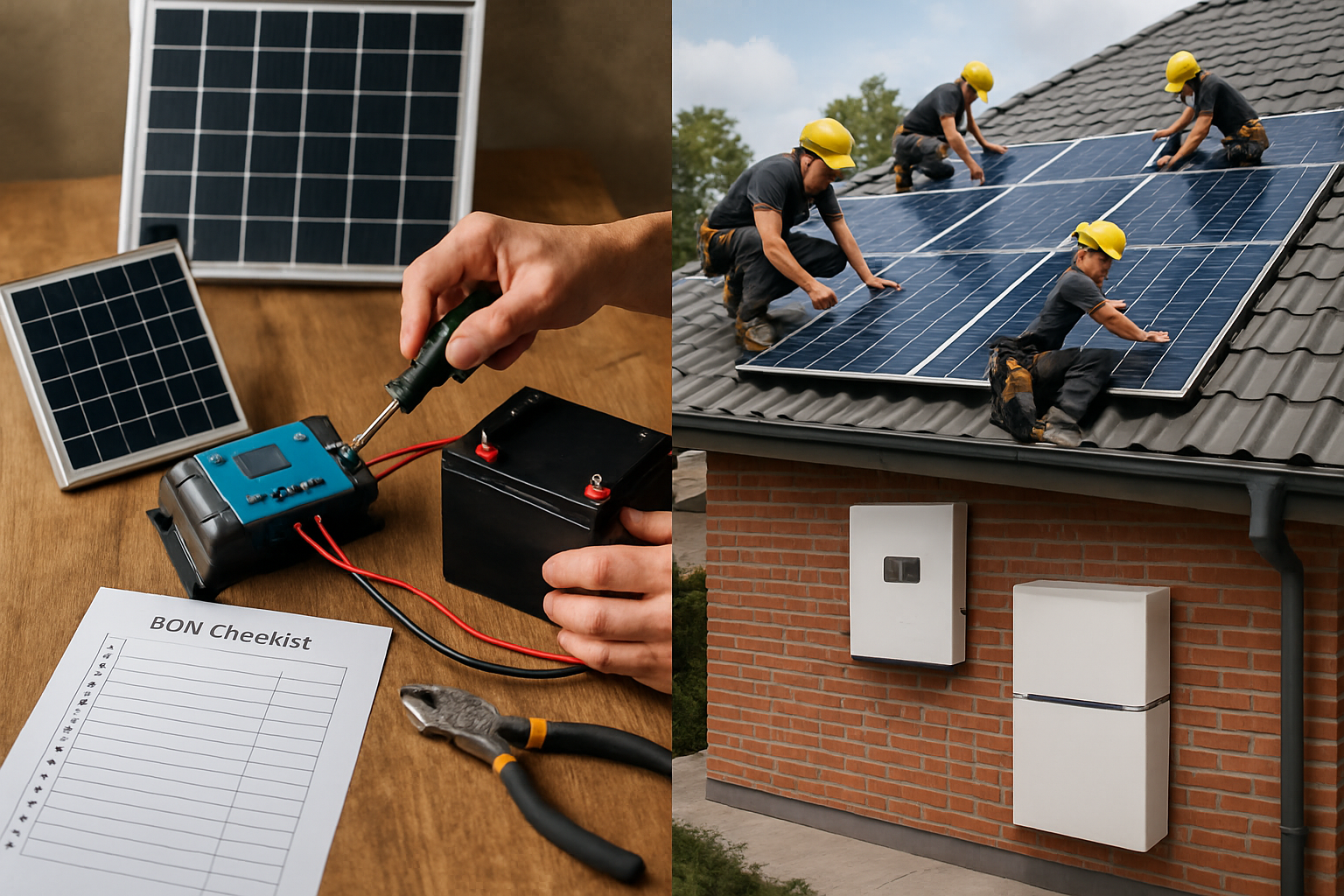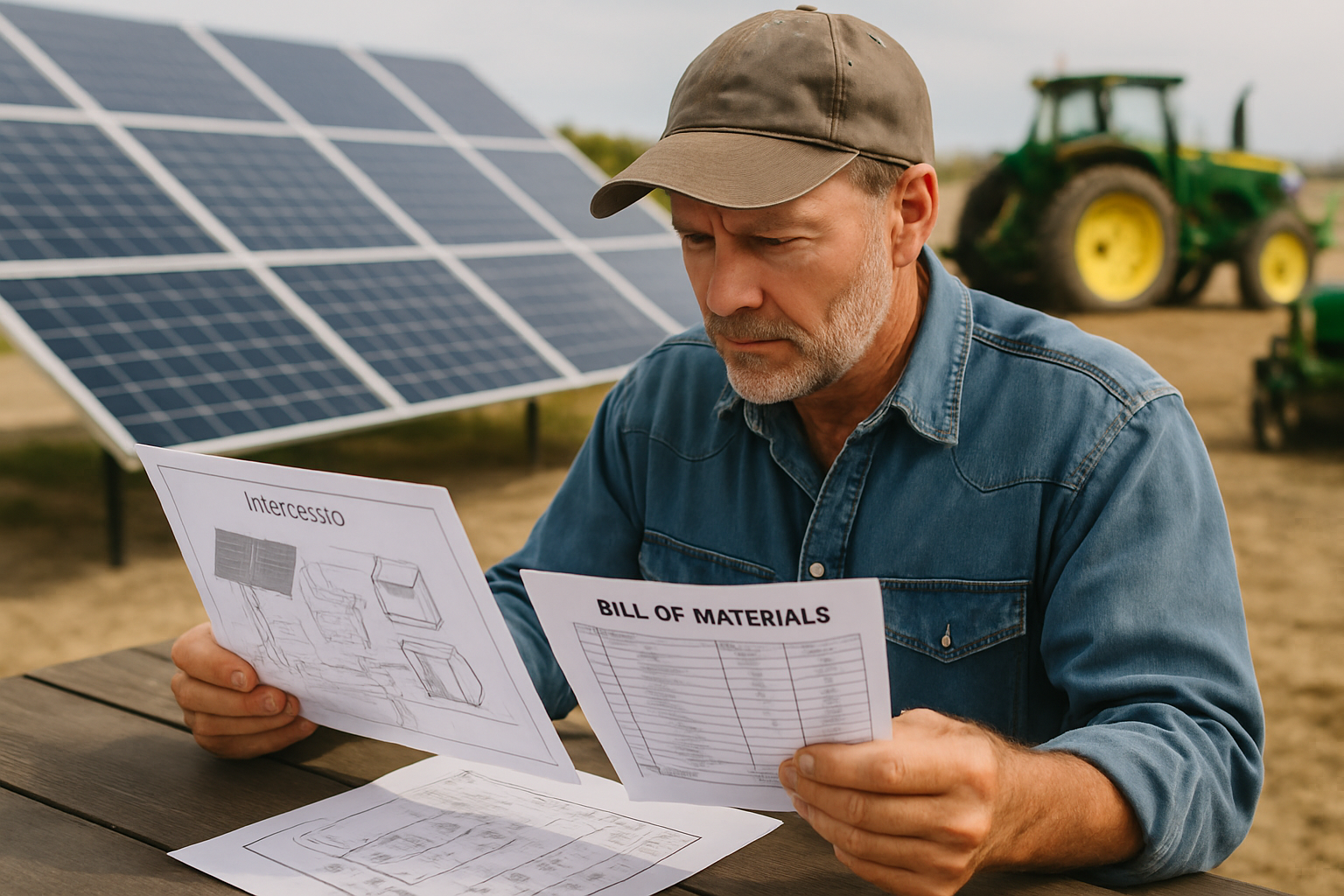Many homeowners dream of energy independence, often believing that building a solar system themselves is the most economical path. The idea of saving money by avoiding professional installation fees is appealing. However, the true cost comparison between do-it-yourself (DIY) solar and a professional turnkey solution is more complex than it appears. This article will examine the financial aspects, hidden expenses, and long-term value of both approaches, helping you make a well-informed decision for your energy future.

The Allure of DIY Solar: Initial Savings and Direct Control
The primary draw of DIY solar lies in the potential for upfront savings. When you choose to build your own system, you directly purchase components like high-performance LiFePO4 batteries, solar inverters, and photovoltaic (PV) panels. This direct procurement often means you pay wholesale or near-wholesale prices, bypassing the markups associated with professional installers.
Component Cost Savings
Buying individual components can significantly reduce the initial outlay. For instance, you might find LiFePO4 batteries offering excellent performance and reliability at a lower price point than if bundled into a full system. Similarly, sourcing your own solar inverters and PV panels allows you to shop around for the best deals, potentially cutting down on material costs. This hands-on approach gives you complete control over component selection, tailoring the system precisely to your needs and budget.
Avoiding Labor Costs
A substantial portion of a turnkey solar system's price covers professional labor. By undertaking the installation yourself, you eliminate these fees entirely. This saving can be thousands of dollars, making DIY solar seem like an undeniable financial winner at first glance. For individuals with strong electrical or construction skills, the prospect of saving on labor is a powerful motivator.
Unpacking the Overlooked Costs of DIY Solar
While the initial cost savings of DIY solar are attractive, many hidden expenses and complexities often emerge during the process. These factors can quickly erode perceived savings, sometimes making the DIY route more expensive than anticipated.
Procurement, Logistics, and Specialized Tools
Sourcing compatible, high-quality components requires extensive research. You need to verify specifications, ensure compatibility between your chosen LiFePO4 batteries, solar inverter, and PV panels, and manage multiple suppliers. Shipping large, heavy items like solar panels and batteries can be costly and complicated. Furthermore, you will need specialized tools for electrical wiring, mounting, and safety, which represent an additional investment. These tools might include specific crimpers, multimeters, conduit benders, and safety harnesses, which you may only use once.
Permitting, Inspections, and Grid Connection
Navigating local building codes, electrical regulations, and utility interconnection requirements is often challenging. Each jurisdiction has unique rules, and obtaining permits can be a time-consuming process involving detailed drawings and technical documentation. Failed inspections due to non-compliance can lead to costly rework and significant delays. Connecting to the grid also involves specific utility approvals and inspections, which can be complex for a first-time installer. This aspect often requires a deep understanding of electrical standards and safety protocols.
Time Investment and Learning Curve
The most significant hidden cost in DIY solar is often your time. Designing a safe and efficient system, researching components, managing logistics, performing the physical installation, and troubleshooting issues demand a considerable time commitment. For someone new to solar, the learning curve can be steep, extending the project duration significantly. Your time has value, and dedicating countless hours to the project means sacrificing other activities or potential income.
The Value Proposition of Professional Solar Solutions
Opting for a professional, turnkey solar solution offers distinct advantages that extend beyond mere installation. These benefits often translate into long-term savings, enhanced reliability, and peace of mind.
Expert Design, Efficiency, and Warranties
Professional installers bring years of experience and specialized knowledge to your project. They design systems optimized for your specific energy consumption patterns and property characteristics, ensuring maximum efficiency and energy harvest. This expertise minimizes performance issues and maximizes your return on investment. Furthermore, professional installations typically come with comprehensive warranties covering both the components and the labor. This provides a crucial safety net, protecting you from unexpected repair costs or system failures. For instance, the industry has seen significant cost reductions over time; PV costs were reduced by 20% for each doubling of cumulative installed capacity, reflecting continuous improvements in manufacturing and deployment.
Streamlined Permitting and Installation
Licensed professionals are adept at navigating the complex permitting and inspection processes. They handle all necessary paperwork, ensuring compliance with local codes and utility requirements. This expertise significantly reduces delays and avoids costly mistakes. The installation itself is performed efficiently and safely, leveraging specialized equipment and trained personnel. Innovations in mounting equipment, for example, have been shown to reduce installation costs and time, making the process faster and more economical for professionals.
Access to Incentives and Long-Term Support
Many government incentives, rebates, and financing options are specifically available or more easily accessible when you use certified installers. Professionals can guide you through these programs, helping you maximize financial benefits. Beyond installation, turnkey providers often offer ongoing maintenance, monitoring, and customer support. This ensures your system operates optimally for its entire lifespan, addressing any issues promptly and effectively.
A Holistic Cost Analysis: Beyond the Initial Price Tag
To truly compare DIY and turnkey solar, you must look beyond the initial purchase price and consider the total cost of ownership (TCO) over the system's lifetime.
Total Cost of Ownership (TCO) Factors
TCO includes the initial investment, maintenance, potential repair costs, and the system's operational efficiency over 20-25 years. While DIY might have a lower upfront cost, potential inefficiencies, unoptimized design, or future repair needs can increase its TCO. A professional system, with its optimized design and robust warranties, often offers a lower TCO despite a higher initial price. Consider the cost of replacing a damaged inverter or a faulty battery in a DIY setup versus having it covered under a professional warranty.
Here's a simplified comparison of potential cost components:
| Cost Category | DIY Solar | Turnkey Solar |
|---|---|---|
| Component Purchase | Direct, potentially lower unit cost | Included in package, may have slight markup |
| Labor | Your time (unpaid) | Professional installation fees |
| Tools & Equipment | Purchase or rent specialized tools | Included in service |
| Permitting & Inspections | Your responsibility, potential for delays/rework | Handled by installer, streamlined |
| Design & Engineering | Your research & effort | Professional system design |
| Warranties | Component-specific only | Component + labor, comprehensive |
| Troubleshooting & Support | Your responsibility | Professional support & maintenance plans |
| System Efficiency | Variable, depends on DIY skill | Optimized by experts |
| Resale Value Impact | Potentially lower without professional documentation | Adds significant property value |
Performance and System Optimization
An expertly designed and installed system maximizes energy production and storage, leading to greater long-term savings on electricity bills. Professionals consider factors like roof angle, shading, and local weather patterns to optimize panel placement and system sizing. They also ensure seamless integration of components, such as LiFePO4 batteries with hybrid inverters, to achieve peak performance. This optimization can lead to significantly higher energy yields over the system's lifespan compared to a less optimized DIY setup.
Resale Value and Insurance Implications
A professionally installed solar system, complete with permits, inspections, and warranties, can significantly increase your property's resale value. Potential buyers have confidence in a system installed by certified experts. Conversely, a DIY system without proper documentation or professional sign-off might deter buyers or complicate insurance coverage. Insurance companies may require proof of professional installation to cover damages related to the solar system, adding another layer of risk to the DIY approach.
Making an Informed Energy Choice
The assertion that DIY solar is always cheaper is a common misconception. While you might save on initial labor costs and directly source components, the hidden expenses of time, specialized tools, permitting complexities, and potential performance issues can quickly add up. Professional turnkey solutions offer expertise, efficiency, comprehensive warranties, and long-term support, often leading to a lower total cost of ownership and greater peace of mind.
Your choice depends on your technical skills, available time, risk tolerance, and long-term financial goals. For those seeking reliable, scalable energy solutions and maximum value over decades, a professional installation often presents a more compelling proposition. For others, the challenge and direct control of a DIY project, despite its complexities, might be a rewarding endeavor.
Frequently Asked Questions
Is DIY solar installation safe?
DIY solar installation involves working with high-voltage electricity and potentially dangerous heights. Without proper training, safety equipment, and adherence to electrical codes, there are significant risks of injury, electrocution, or fire. Professional installers are trained in safety protocols and have the necessary equipment to perform the job securely.
Do DIY solar systems qualify for financial incentives?
Eligibility for incentives like tax credits or rebates can vary. Many programs require systems to be installed by licensed professionals to ensure compliance with safety and performance standards. While some incentives may be available for DIY projects, it is crucial to verify specific requirements with local, state, and federal programs before proceeding.
How long does a typical DIY solar installation take?
The duration of a DIY solar installation varies widely based on system size, your experience level, and the complexity of local permitting. It can range from several weeks to several months, especially when factoring in research, component delivery, and multiple inspection attempts. Professional installations are typically completed within days or a few weeks, depending on the scale.
What are the main risks associated with DIY solar?
Key risks include improper installation leading to reduced efficiency or system failure, safety hazards (electrical shock, fire), non-compliance with building codes resulting in fines or rework, voided warranties on components if not installed correctly, and difficulty with insurance claims. There is also the risk of not achieving grid interconnection due to technical or regulatory hurdles.
References
- International Energy Agency (IEA). (2011). Solar Energy Perspectives.
- U.S. Department of Energy. (2014, January 24). EERE Success Story—California: SunShot-Supported Technology Maximizes Taxpayer's Investment.





Leave a comment
All comments are moderated before being published.
This site is protected by hCaptcha and the hCaptcha Privacy Policy and Terms of Service apply.